|
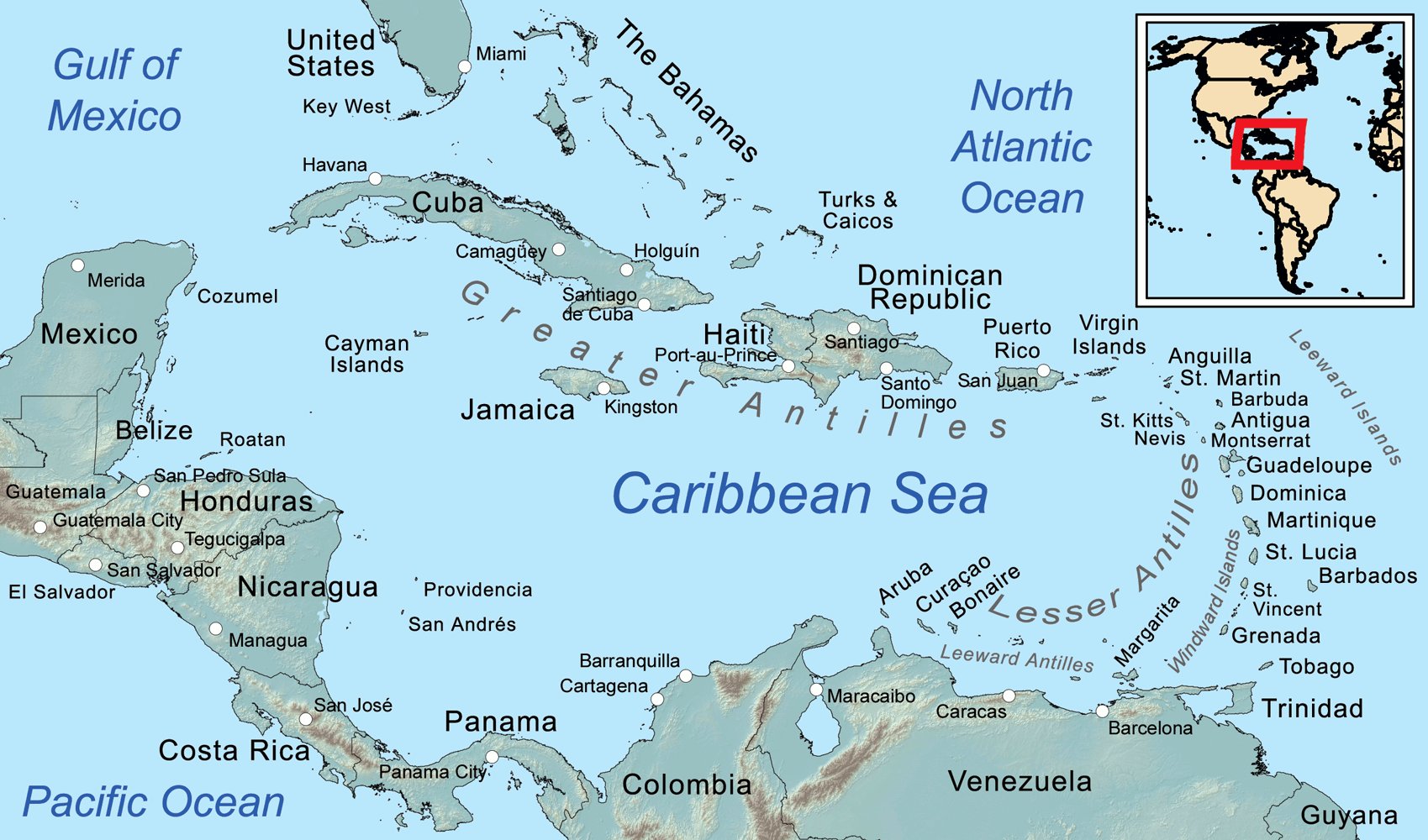
Map
of the Caribbean Sea, showing the Greater, Lesser, and Leeward Antilles, the
Leeward and Windward Islands.
The Bahamas is known officially as the Commonwealth of The Bahamas, is a sovereign country within the Lucayan Archipelago of the West Indies in the
Atlantic. It takes up 97% of the Lucayan Archipelago's land area and is home to 88% of the archipelago's population. The archipelagic state consists of more than 700 islands, cays, and islets in the Atlantic Ocean, and is located north of Cuba and northwest of the island of Hispaniola (split between Haiti and the Dominican Republic) and the Turks and Caicos Islands, southeast of the American state of Florida, and east of the Florida Keys. The capital is Nassau on the island of New Providence. The Royal Bahamas Defence Force describes The Bahamas' territory as encompassing 470,000 km2 (180,000 sq mi) of ocean space.
The Bahama Islands were inhabited by the Lucayans, a branch of the Arawakan-speaking Taíno, for many centuries. Columbus was the first European to see the islands, making his first landfall in the "New World" in 1492. Later, the Spanish shipped the native Lucayans to and enslaved them on Hispaniola, after which the Bahama islands were mostly deserted from 1513 until 1648, when English colonists from Bermuda settled on the island of Eleuthera.
The Bahamas became a British crown colony in 1718, when the British clamped down on piracy. After the American Revolutionary War, the Crown resettled thousands of American Loyalists to the Bahamas; they took enslaved people with them and established plantations on land grants. African enslaved people and their descendants constituted the majority of the population from this period on. The slave trade was abolished by the British in 1807; slavery in the Bahamas was abolished in 1834. Subsequently, the Bahamas became a haven for freed African slaves. Africans liberated from illegal slave ships were resettled on the islands by the Royal Navy, while some North American slaves and Seminoles escaped to the Bahamas from Florida. Bahamians were even known to recognise the freedom of enslaved people carried by the ships of other nations which reached the Bahamas. Today Afro-Bahamians make up 90% of the population of 400,516.
The country gained governmental independence in 1973, led by Sir Lynden O. Pindling, with
Oueen
Elizabeth II as head of state in 2022. In terms of gross domestic product per capita, The Bahamas is one of the richest countries in the Americas (following the United States and Canada), with an economy based on tourism and offshore finance.
DUKE OF WINDSOR
In August 1940, the Duke of Windsor was appointed Governor of the Bahamas. He arrived in the colony with his wife. Although disheartened at the condition of Government House, they "tried to make the best of a bad situation". He did not enjoy the position, and referred to the islands as "a third-class British colony". He opened the small local parliament on 29 October 1940. The couple visited the "Out Islands" that November, on Axel Wenner-Gren's yacht, which caused controversy; the British Foreign Office strenuously objected because they had been advised by United States intelligence that Wenner-Gren was a close friend of the Luftwaffe commander
Hermann Göring of Nazi Germany.
The Duke was praised at the time for his efforts to combat poverty on the islands. A 1991 biography by Philip Ziegler, however, described him as contemptuous of the Bahamians and other non-European peoples of the Empire. He was praised for his resolution of civil unrest over low wages in Nassau in June 1942, when there was a "full-scale riot". Ziegler said that the Duke blamed the trouble on "mischief makers – communists" and "men of Central European Jewish descent, who had secured jobs as a pretext for obtaining a deferment of draft". The Duke resigned from the post on 16 March 1945.
INDEPENDENCE
Shortly after independence, The Bahamas joined the International Monetary Fund and the World Bank on 22 August 1973, and later the
United Nations on 18 September 1973.
Politically, the first two decades were dominated by Pindling's PLP, who went on to win a string of electoral victories. Allegations of corruption, links with drug cartels and financial malfeasance within the Bahamian government failed to dent Pindling's popularity.
Meanwhile, the economy underwent a dramatic growth period fuelled by the twin pillars of tourism and offshore finance, significantly raising the standard of living on the islands. The Bahamas' booming economy led to it becoming a beacon for immigrants, most notably from Haiti.
In 1992, Pindling was unseated by Hubert Ingraham of the FNM. Ingraham went on to win the 1997 Bahamian general election, before being defeated in 2002, when the PLP returned to power under Perry Christie. Ingraham returned to power from 2007 to 2012, followed by Christie again from 2012 to 2017. With economic growth faltering, Bahamians re-elected the FNM in 2017, with Hubert Minnis becoming the fourth prime minister.
In September 2019, Hurricane Dorian struck the Abaco Islands and Grand Bahama at Category 5 intensity, devastating the northwestern Bahamas. The storm inflicted at least US$7 billion in damages and killed more than 50 people, with 1,300 people still missing.
In September 2021, the ruling Free National Movement lost to the opposition Progressive Liberal Party in a snap election, as the economy struggled to recover from its deepest crash since at least 1971. Progressive Liberal Party (PLP) won 32 of the 39 seats in the House of Assembly. Free National Movement (FNM), led by Minnis, took the remaining seats. On 17 September 2021, the chairman of the Progressive Liberal Party (PLP) Phillip “Brave” Davis was sworn in as the new Prime Minister of Bahamas to succeed Hubert Minnis.
ECONOMY
The Bahamas is one of the richest countries in the Americas. Its currency (the Bahamian dollar) sometimes level pegs with the US dollar.
The Bahamas relies heavily on tourism to generate most of its economic activity. Tourism as an industry not only accounts for about 50% of the Bahamian GDP, but also provides jobs for about half of the country's workforce. The Bahamas attracted 5.8 million visitors in 2012, more than 70% of whom were cruise visitors.
After tourism, the next most important economic sector is banking and offshore international financial services, accounting for some 15% of GDP. It was revealed in the Panama Papers that The Bahamas is the jurisdiction with the most offshore entities or companies in the world.
The economy has a very competitive tax regime (classified by some as a tax haven). The government derives its revenue from import tariffs, VAT, licence fees, property and stamp taxes, but there is no income tax, corporate tax, capital gains tax, or wealth tax. Payroll taxes fund social insurance benefits and amount to 3.9% paid by the employee and 5.9% paid by the
employer. In 2010, overall tax revenue as a percentage of GDP was 17.2%.
Agriculture and manufacturing form the third largest sector of the Bahamian economy, representing 5–7% of total GDP. An estimated 80% of the Bahamian food supply is imported. Major crops include onions, okra, tomatoes, oranges, grapefruit, cucumbers, sugar cane, lemons, limes, and sweet potatoes.
Access to biocapacity in the Bahamas is much higher than world average. In 2016, the Bahamas had 9.2 global hectares of biocapacity per person within its territory, much more than the world average of 1.6 global hectares per
person. In 2016 the Bahamas used 3.7 global hectares of biocapacity per person - their ecological footprint of consumption. This means they use less biocapacity than the Bahamas contains. As a result, the Bahamas is running a biocapacity reserve.

SARGASSUM:
Represents an immediate
threat to the economics of the Caribbean Islands, the
Gulf of
Mexico, and African West Coast, but is
also a potential asset if it can be economically harvested and used for,
among other things, fertilizer for agriculture: where
there is a world shortage.
BIOMASS - BUILDING
MATERIALS - CANCER
TREATMENTS - CLOTHING
& SHOES - CO2
SEQUESTRATION - COSMETICS
FERTILIZERS - FOODS - MEDICINES - MINERALS - PACKAGING - SUPPLEMENTS - VITAMINS
THE
CARIBBEAN ISLANDS BY
POPULATION
1
Cuba 11,252,999
2 Haiti
11,263,077 (Hispaniola)
3 Dominican Republic 10,766,998 (Hispaniola)
4 Puerto Rico (US) 3,508,000
5 Jamaica 2,729,000
6 Trinidad and Tobago 1,357,000
7 Guadeloupe (France) 405,000
8 Martinique (France) 383,000
9 Bahamas 379,000
10 Barbados 283,000
11 Saint Lucia 172,000
12 Curaçao (Netherlands) 157,000
13 Aruba (Netherlands) 110,000
14 Saint Vincent and the Grenadines 110,000
15 United States Virgin Islands
105,000
16 Grenada 104,000
17 Antigua and Barbuda 89,000
18 Dominica 71,000
19 Cayman Islands (UK) 59,000
20 Saint Kitts and Nevis 46,000
21 Sint Maarten (Netherlands) 39,000
22 Turks and Caicos Islands (UK) 37,000
23 Saint Martin (France) 36,000
24 British Virgin Islands (UK) 31,000
25 Caribbean Netherlands
26,000
26 Anguilla (UK) 14,000
27 Saint Barthélemy (France) 10,000
28 Montserrat (UK) 5,000
29
Tortuga 25,936
30
Roatán 110,000
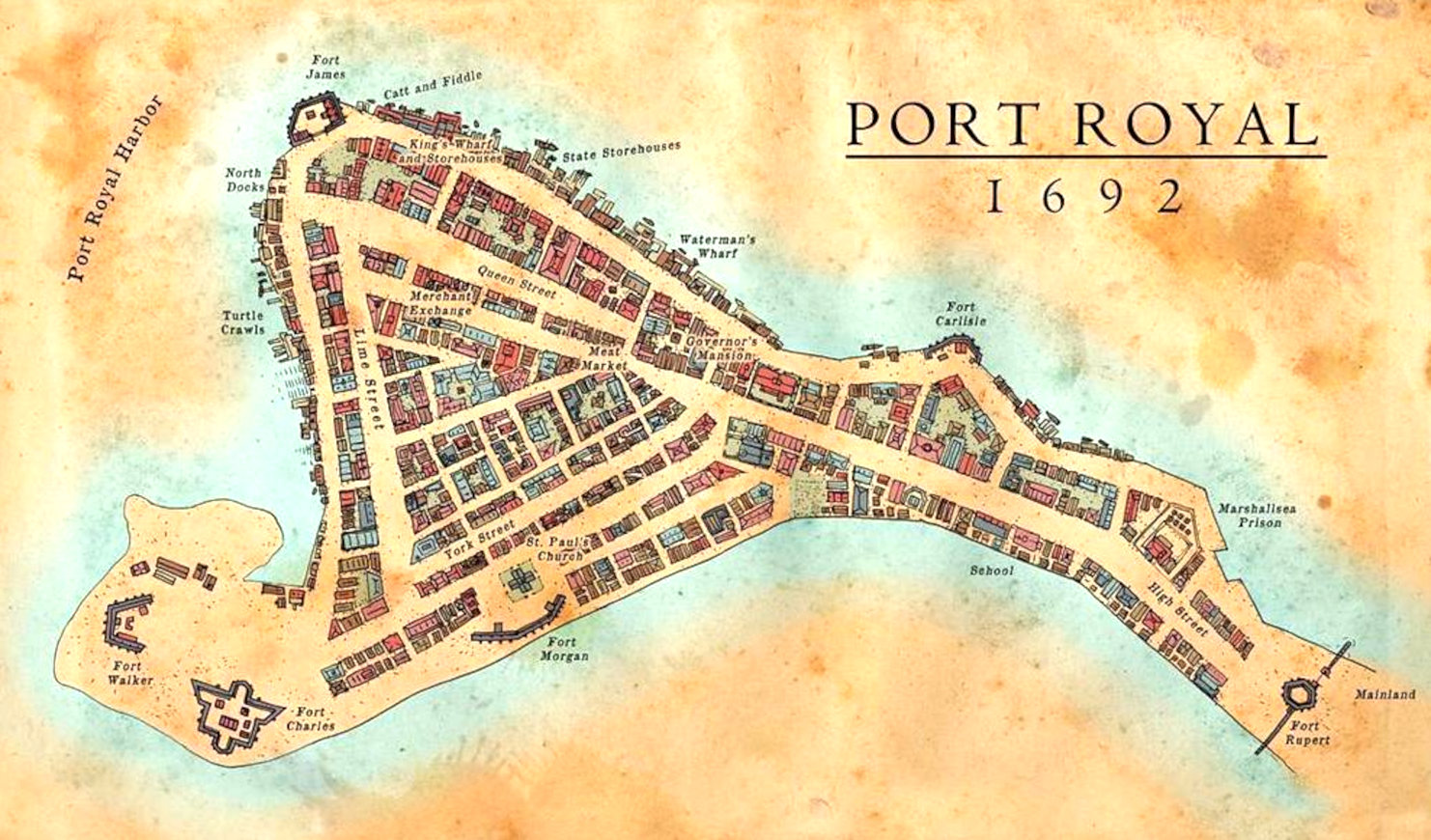
Map
of Port Royal
from 1692, where the notorious buccaneer, Sir Henry Morgan
was buried, along with a Code to give meaning a treasure Map inherited by Lord
Huntington - giving the whereabouts of a Kings ransom. Unfortunately,
Port Royal was sunk when hit by an earthquake and tsunami in June 1692,
along with the grave of the infamous buccaneer, lost in time until
re-discovered by John
Storm and the Elizabeth
Swann. This is the start of a race to find the hidden stash, involving treachery
and industrial espionage.
The
Caribbean
Sea is littered with shipwrecks and dotted with dozens of paradise
islands, where pirates
are said to have buried their treasure.
Many island nations are at risk as to rising
sea levels, caused by climate
change, with the United
Nations powerless to deal with global
warming, being dependent on fossil
fuels. The area has some of the most interesting World
Atlas locations on Planet
Earth.
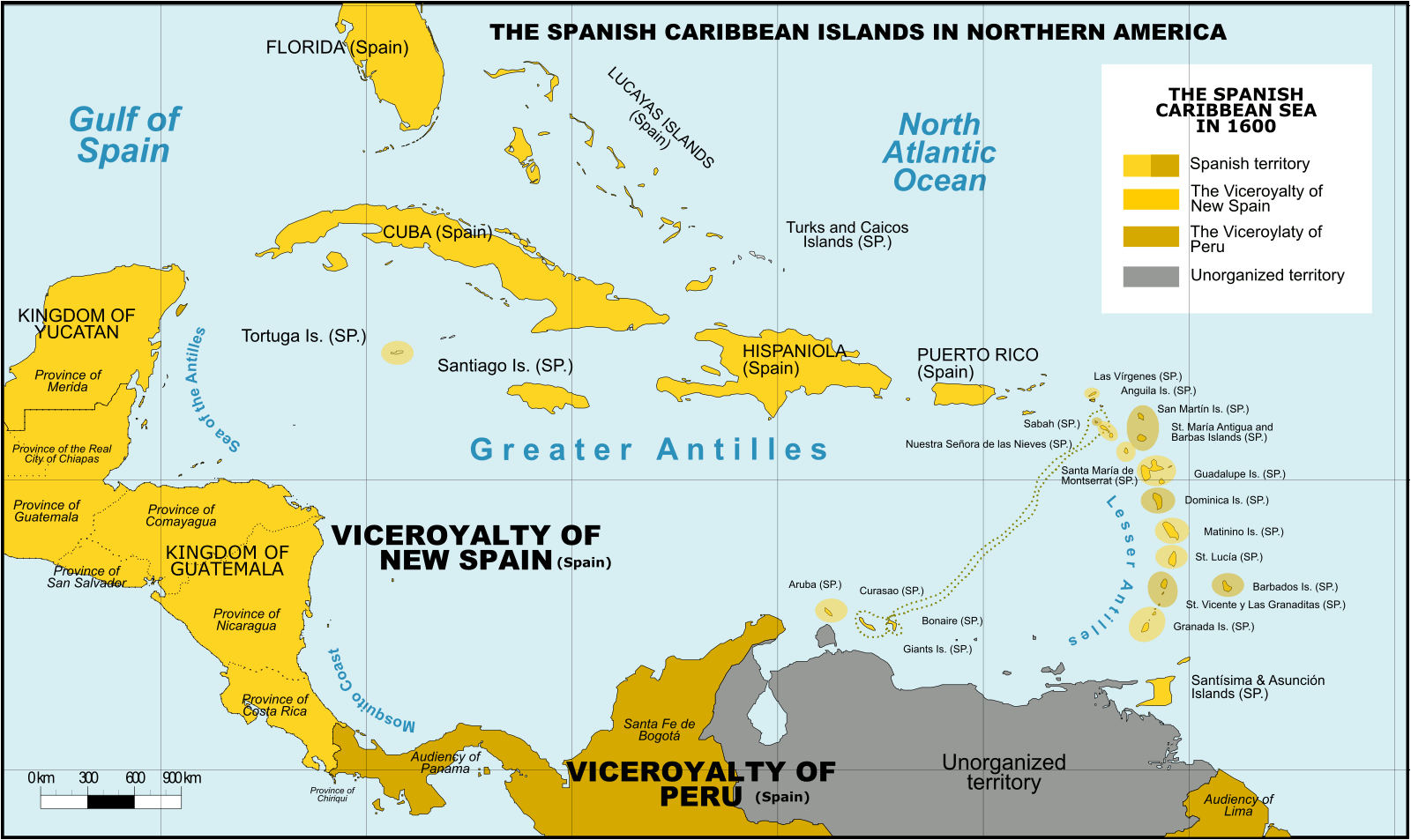
Spanish Caribbean Islands 1600 Spanish Overseas territories Northern America Turks and Caicos Islands (1492-1516, 1516-1678) * Islas Turcas y Caicos The Bahamas (1492-1516, 1516-1648) *Islas Lucayas Bermuda (1503-1516, 1516-1609) *Carabela/Isla de los Diablos Greater Antilles Cuba (1492-1762, 1763-1898) *Juana Cayman Islands (UK) (1503-1670) *Islas de las Tortugas La Española/Hispanola (1492-1795, 1801-1822) Dominican Republic (1492-1795, 1801-1822, 1861-1863) *Santo Domingo Haiti (1492-1793) *Santa María Jamaica (1492-1655) *Isla Santiago Puerto Rico (US) (1493-1898) *San Juan Bautista Lesser Antilles Leeward Islands: Virgin Islands (1493-1587) *Islas Once Mil Vírgenes / Islas Vírgenes St. Thomas (US) (1493-1587) St. John (US) (1493-1587) St. Croix (US) (1493-1587) Water Island (US) (1493-1587) British Virgin Islands (UK) (1493-1648) *Islas Once Mil Vírgenes / Islas Vírgenes Tortola (UK) (1493-1648) Virgin Gorda (UK) (1493-1672) Anegada (UK) (1493-1672) Jost Van Dyke (UK) (1493-1672) Anguilla (UK) (1500-1631, 1631-1650) *Isla de la Anguila Saint Martin/Sint Maarten (France/Neth.) (1493-1631) *San Martín Saint-Barthélemy (Fr.) (1493-1648) *San Bartolomeo Saba (Neth.) (1493-1640) *Saba/San Cristóbal Sint Eustatius (Neth.) (1493-1640) *San Eustaquio St. Kitts and Nevis (1493-1628) *Nuestra Señora de las Nieves Saint Kitts (1493-1628) *San Cristóbal Nevis (1493-1628) *Nieves Antigua and Barbuda Barbuda (1493-1628) *Santa Dulcina Antigua (1493-1632) *Santa María de la Antigua Redonda (1493-1632) *Santa María la Redonda Montserrat (UK) (1493-1632) *Santa María de Monstserrat Guadeloupe (Fr.) (1493-1631) *Santa Guadalupe Windward Islands: Dominica (1493-1635) *Domingo Martinique (Fr.) (1502-1635) *Martinino Saint Lucia (St. Lucia) (1502-1660) *Santa Lucía Barbados (1492-1620) *Los Barbados/El Barbudo St. Vincent and the Grenadines (1498-1627) *San Vicente Saint Vincent the Grenadines Grenada (1498-1650) *Concepción Carriacou & Petite Martinique (Grenada) Trinidad & Tobago (1498-1628) *Santísima e Asunción Aruba (Neth.) (1499-1648) *Aruba/Oroba Curaçao (Neth.) (1499-1634) *Curasao/Isla de los Gigantes Bonaire (Neth.) (1499-1635) * Bonaire/Buon Aire Viceroyalty of New Granada Los Roques Archipelago (Ven) La Orchila (Ven) La Tortuga (Ven) La Blanquilla (Ven) Margarita Island (Ven) Coche (Ven) Cubagua (Ven) Other islands (Ven) *Founded Spanish names
CITIES
LOST IN INNERSPACE
ATLANTIS
- MEDITERRANEAN SEA
ATLIT-YAM
- ISRAEL
BAIA
- ITALY
DWARKA
- INDIA
PAVLOPETRI
- GREECE
PHANAGORIA
- BLACK SEA
PORT
ROYAL - JAMAICA
RUNGHOLT
- DENMARK
THONIS-HERACLEION
AND ALEXANDRIA - EGYPT
YONAGUNI
JIMA - JAPAN
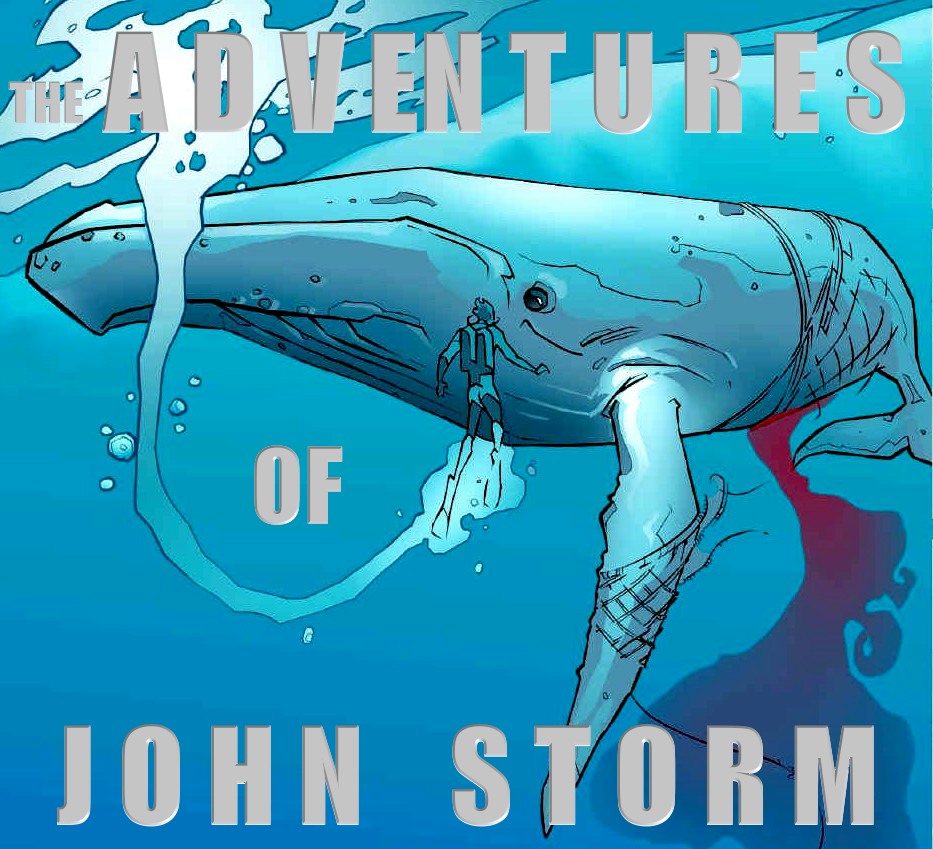

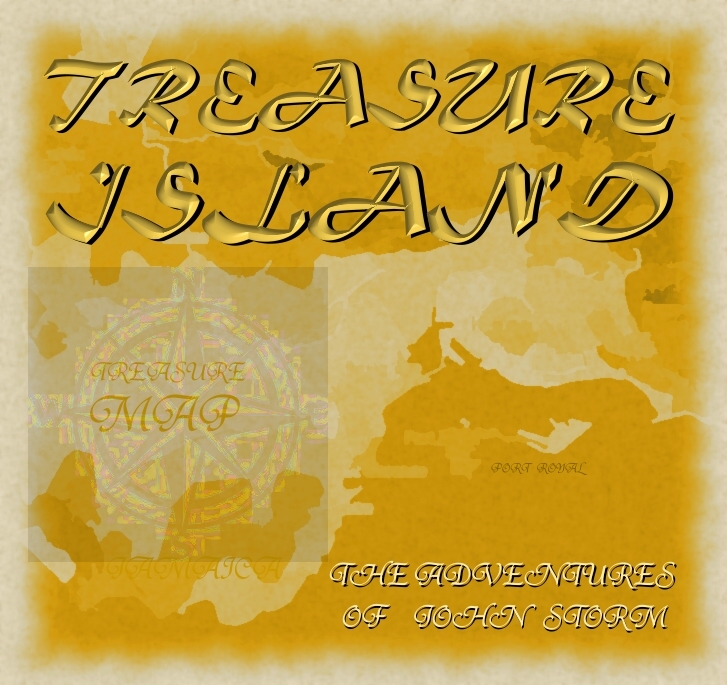
STUDIO/AGENTS: A draft script for
Kulo-Luna is available on request. Cleopatra The Mummy is currently under
development
|



